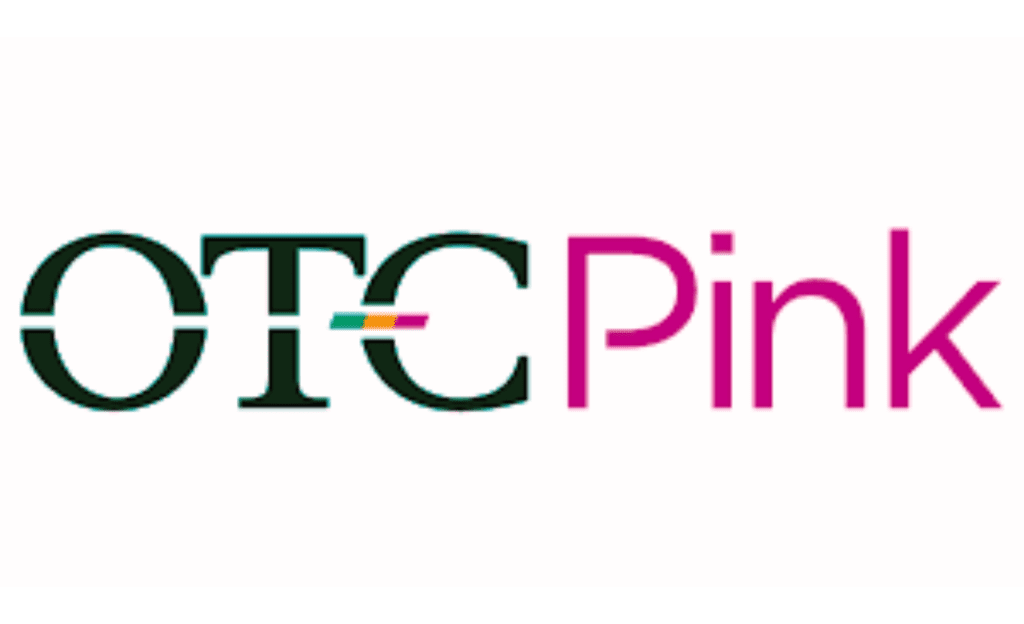
Introduction
In the realm of American finance, one name stands out as a vital source of price and liquidity information for over-the-counter (OTC) securities—OTC Markets Group. Formerly known as Pink Sheets, this financial market has become a cornerstone for investors looking to uncover opportunities and risks in nearly 10,000 OTC-traded securities. With its headquarters nestled in the bustling heart of New York City, OTC Markets Group has been a consistent player in the financial landscape. In this article, we delve into the history, structure, and significance of this renowned market.
Table of Contents
A Glimpse into History of OTC Markets
Established back in 1913 as the National Quotation Bureau (NQB), OTC Markets Group has a rich history that spans decades. Initially, NQB was responsible for reporting quotations for both stocks and bonds. These valuable insights were published in the distinctive Pink Sheets and Yellow Sheets, aptly named after the color of paper they were printed on. A significant milestone occurred in September 1999, when NQB unveiled the real-time Electronic Quotation Service, marking a pivotal shift towards modernization. This transformative journey continued as NQB transformed into Pink Sheets LLC in 2000 and later into Pink OTC Markets in 2008. Finally, in 2010, the company adopted its present name, OTC Markets Group, solidifying its position as a financial powerhouse.
OTC Market Structure
OTC Markets Group operates three distinct markets—OTCQX, OTCQB, and Pink—each meticulously designed to empower investors with crucial insights into opportunities and potential pitfalls. This segmentation ensures that OTC-traded securities are transparently organized, aiding investors in making informed decisions that align with their goals.
Diverse Spectrum of Companies
One of the unique aspects of OTC Markets Group is its ability to accommodate a diverse range of companies. While some foreign firms find a platform through American depositary receipts (ADRs), numerous closely held, small, and thinly traded U.S. companies also make OTC Markets their primary trading ground. This diversity brings together a fascinating amalgamation of enterprises, each with its own story and trajectory.
Regulatory Landscape
What sets OTC Markets Group apart is its flexible listing requirements. While companies are not obligated to file with the Securities and Exchange Commission (SEC), many choose to do so, showcasing their commitment to transparency. For foreign issuers, adherence to qualified foreign stock exchange listing requirements and English disclosures enhances accessibility. Similarly, U.S.-based issuers often uphold their reporting obligations, providing ongoing financial reports through OTC Markets Group. However, it’s worth noting that some companies categorized within the Pink market tier do not meet the stringent listing criteria of major stock exchanges, making thorough research an imperative for investors.
OTC Markets Navigating Risks and Rewards
With its varied landscape of companies and markets, OTC Markets Group presents investors with both opportunities and challenges. Securities trading on the OTCQB and higher-tiered OTCQX trading marketplaces carry Blue Sky secondary trading exemptions in 33 states, a testament to their potential. Brokers can recommend these securities to clients, much like those listed on national stock exchanges. Yet, the inherent risks in the lower-tier companies highlight the importance of diligent research. The U.S. Securities and Exchange Commission advises prospective investors to tread carefully and explore thoroughly before committing to investments in these companies.
Understanding OTC Markets Group: Exploring the Three Distinct Markets

In the intricate landscape of financial markets, the OTC Markets Group plays a pivotal role in categorizing securities and offering insights into their level of financial and corporate disclosure. This article delves into the three designated markets—OTCQX, OTCQB, and Pink—each with its unique characteristics, significance, and regulatory framework.
OTC Markets Group: A Quick Overview
OTC Markets Group stands as a beacon of insight, categorizing securities based on the depth of information provided by the associated companies. While the OTCQX market has stringent financial requirements, the designations themselves do not reflect the quality or merit of the securities. Rather, they serve as indicators of the company’s commitment to timely and comprehensive disclosure.
OTCQX: Where Quality Meets Disclosure
The OTCQX market caters to a diverse range of entities, including multinational corporations and domestic growth companies seeking to connect with U.S. investors. To join this prestigious tier, companies must undergo a rigorous qualitative review by OTC Markets Group. Although SEC registration is not mandatory, companies are required to post financial information with OTC Markets Group. Additionally, U.S. companies must demonstrate ongoing operations, while foreign issuers must align with the standards of qualified foreign exchanges. Further enhancing oversight, OTCQX securities must be sponsored by approved third-party investment banks or law firms known as OTCQX Sponsors.
OTCQB: Enhancing Investor Confidence
With a bid price requirement of one penny ($0.01), the OTCQB market is designed to deter dilutive stock fraud schemes and promotions. Companies within this market enhance investor confidence by annually submitting an OTCQB Certification, validating the accuracy of their company information. This includes details about reporting status, management, major shareholders, and more. This certification is essential for securities publicly quoted by broker-dealers under SEC Rule 15c2-11. Starting May 1, 2014, Pink-traded companies transitioning to current SEC reporting status are also required to provide this certification. An annual fee of $12,000, along with a one-time $2,500 application fee, is associated with the OTCQB market.
OTC Blue Sky Status: State Regulations and Collaboration
The OTCQX Market holds Blue Sky status in 33 states, while the OTCQB Market enjoys this recognition in 30 states. Blue Sky Laws serve as safeguards against securities fraud, requiring sellers of new issues to provide verifiable financial details. OTC Markets Group’s collaboration with state regulators, post the 2014 JOBS ACT, has ensured that information from companies in the OTCQX and OTCQB premium markets is easily accessible online. As of April 2018, 60% of states acknowledge the OTCQX Market for secondary trading exemptions, highlighting the commitment to investor protection and quality control standards.
Navigating the OTC Pink Market
The Pink market operates as an open market without specific financial standards or reporting requirements. Securities in this tier are not mandated to register with the SEC. Companies within the Pink category are further distinguished by the level and timeliness of information provided to investors. This categorization ranges from those with current, limited, to no public disclosure. Interestingly, this category gained both fame and infamy through its portrayal in the movie “The Wolf of Wall Street.”
Unveiling the Dynamics of Market Designations: Exploring OTC Markets Group Categories

In the realm of financial markets, OTC Markets Group operates as a significant player by categorizing securities into distinct markets based on information disclosure levels. This article takes a deep dive into the categories of OTC Markets Group, shedding light on the various designations that guide investors in understanding the nature and potential of different securities.
Understanding Market Designations
OTC Markets Group employs a meticulous categorization process that classifies securities into several tiers based on the quality and timeliness of information disclosure. These tiers aid investors in gauging the risks and opportunities associated with a particular security. Let’s delve into each of these designations.
OTC Current Information: Transparency at Its Best
Companies that regularly submit Quarterly and Annual Reports find their place in the Current category. This classification includes diverse entities, ranging from shell companies to those in developmental stages. While audited financial statements are not obligatory, the criteria necessitate the presence of Quarterly reports every three months and Annual reports for the preceding two years.
Limited Information: Navigating Complexity
Securities with Limited Information status encompass companies that have submitted information to OTC Markets data and news service in the past six months or made filings on the SEC’s EDGAR system within the same timeframe. This designation accommodates entities that provide information semi-annually, unable to adhere to the Quarterly and Annual Reports requirement. It often includes financially distressed or bankrupt companies.
Expert Market: A Cloak of Secrecy
The Expert Market designation pertains to companies that shun public disclosure. Such entities either do not provide current information via OTC Markets’ disclosure and news service or offer information that is older than six months. This tier encompasses defunct companies, often marred by questionable management practices. Securities in this category pose high risk and are hidden from public view.
Caveat Emptor: Buyer Beware
The “Caveat Emptor” label signifies public interest concerns related to the designated company. This could stem from a spam campaign, stock promotion, or known fraudulent activities. Companies designated as Caveat Emptor may face quote blocks on otcmarkets.com, particularly during spam campaigns.
Quotation Eligibility and Regulation
Quoting OTC securities requires compliance with Exchange Act Rule 15c2-11 and submission of Form 211 to the FINRA OTC Compliance Unit. Proposed amendments in 2019 aimed to modernize this rule, highlighting its importance in regulating the OTC securities market. Other FINRA rules, such as Rule 6432 and Rule 5250, further govern aspects of SEC Rule 15c2-11, contributing to a comprehensive regulatory framework.
OTC Risks and the Road Ahead
OTC Markets often involve microcap stocks, colloquially known as penny stocks, which have been associated with fraudulent activities. Some businesses were delisted and switched to OTC marketplaces after the Sarbanes-Oxley Act was passed in order to save expenses and avoid some requirements. However, pressure remains on OTC companies to enhance their disclosure practices.
Evolution of OTC Markets: OTCBB and Grey Market
The OTC Bulletin Board (OTCBB), a listing of securities traded “over the counter,” has gradually declined in significance. OTCBB companies transitioned to OTC Markets’ OTC Link ATS, aligning with the needs of automated broker-dealers. The Grey Market encompasses securities not listed on exchanges or quoted on OTC Markets/OTCBB, operating through independent and unsolicited transactions.
Compliance Data Products: A Window to Risk
Compliance Analytics Product offers a risk score for OTCQX, OTCQB, Pink, and Grey securities. This assessment considers factors like caveat emptor, shell status, penny stock status, price/volume changes, and stock promotion data. The Promotion Data Product provides historical and active promotion data for these securities, empowering market professionals and investors.
Unveiling Market Insights: Exploring Promotion Data and Beyond

Delving into the intricate world of financial markets, the Promotion Data Product stands as a beacon of insight for market professionals and investors. This article takes you on a journey through the realms of promotion data, sheds light on the evolution of the OTC Bulletin Board (OTCBB), and explores the enigmatic Grey Market. Furthermore, we’ll delve into Compliance Data Products, particularly transformative Compliance Analytics, that empower stakeholders with vital risk assessment tools.
Decoding Promotion Data
The Promotion Data Product offers a treasure trove of information to market professionals and investors. For OTCQX, OTCQB, Pink, and Grey stocks, it offers information on current and previous promotions. This rich repository helps stakeholders gain a comprehensive understanding of the promotional activities surrounding different securities.
Evolution of OTCBB: A Brief Retrospective
The OTC Bulletin Board (OTCBB) was a platform akin to OTC Markets, facilitating the trading of securities “over the counter.” Over time, the relevance of OTCBB waned, with limited activity observed. However, it was once retained as a potential last-resort system to navigate disruptions. OTCBB companies were mandated to furnish timely reports to a U.S. regulatory agency. Yet, as the landscape evolved, OTCBB companies transitioned to OTC Markets’ OTC Link ATS, capitalizing on its fully electronic trading platform tailored to automated broker-dealers. The curtain fell on the OTCBB on November 8, 2021.
Unveiling OTC Grey Market
The Grey Market encompasses securities that lack listings on stock exchanges or formal quoting on OTC Markets/OTCBB. These securities operate in an independent realm, free from central listing or quoting. Transactions occur on an unsolicited basis, with trades reported to a self-regulatory organization (SRO). This data subsequently finds its way to market data companies. Referred to as OTOTC or Other OTC, the Grey Market offers a distinct space for these unlisted securities.
Empowering with Compliance Data Products
Central to risk assessment, Compliance Data Products have emerged as essential tools for stakeholders. Compliance Analytics, in particular, takes the lead by offering a security-specific risk score for OTCQX, OTCQB, Pink, and Grey securities. This score is determined based on 19 parameters, evaluating aspects such as caveat emptor, shell status, penny stock status, price/volume changes, and stock promotion data. Notably, the integration of “Hot Sector” information about sectors like cannabis, cryptocurrency, and blockchain further bolsters the efficacy of this product.
Unveiling the Dynamics of Over-the-Counter (OTC) Trading

In the realm of financial markets, Over-the-Counter (OTC) trading stands as a unique avenue for transactions. Contrasting with traditional exchange trading, OTC trading offers distinct advantages and dynamics. This article delves into the world of OTC trading, its significance, and the interplay between stocks and securities within this domain.
Understanding OTC Trading
OTC trading, also known as off-exchange or pink sheet trading, entails direct transactions between two parties without exchange supervision. While exchange trading offers liquidity and transparency, OTC trading operates in a more personalized manner. Notably, OTC trades may not always publicly disclose prices, setting it apart from exchange trading.
A Spectrum of Tradable Instruments
The scope of OTC trading extends beyond stocks, encompassing commodities, financial instruments, and derivatives. Unlike regulated bourse platforms, OTC-traded products can have flexible standards, allowing for varied quantities and qualities. This dynamic flexibility offers a distinct advantage for stakeholders seeking tailored transactions.
The OTC Derivative Market
Derivatives are important in the OTC market for a variety of asset classes, including interest rates, foreign currency, equities, and commodities. This variety highlights how flexible OTC trading is in meeting various financial demands.
The Evolution of OTC Trading
The landscape of OTC trading has evolved over the years. In the United States, off-exchange trading accounted for a significant portion of stock trades, indicating its growing relevance. Notably, the volume of cleared transactions in OTC derivatives underlines the financial magnitude of this market.
Stock Trading in the OTC Arena
Stock trading within the OTC arena presents distinct characteristics. While exchange-listed stocks can occasionally be traded OTC on the third market, the norm is for OTC stocks to remain separate from exchange trading. OTCBB (OTC Bulletin Board) and OTC Link are platforms facilitating OTC stock trading.
Regulatory Landscape and Compliance
The regulatory landscape for OTC trading is diverse. OTC stocks quoted on OTCBB must adhere to limited U.S. Securities and Exchange Commission (SEC) reporting requirements. Stricter financial and reporting standards apply to OTCQX stocks, while other OTC stocks, including Pink Sheets and “gray market” stocks, have varied reporting requirements.
OTC Trading: A Gateway and Challenge
Notable corporations, such as Wal-Mart, embarked on their journey in the OTC arena before transitioning to fully regulated markets. The allure of OTC trading lies in its accessibility, enabling companies to access markets before achieving full exchange listings.
Exploring OTC Challenges
While OTC trading offers unique benefits, it also presents challenges. Instances of penny stock fraud and risks underscore the need for due diligence. Investors are cautioned to approach OTC markets with care, with a preference for established foreign firms that leverage OTC for market access.
Demystifying Over-the-Counter Contracts: A Glimpse into Modern Finance

In the intricate landscape of finance, Over-the-Counter (OTC) contracts play a pivotal role, shaping the future of trades and agreements. This article delves into the dynamics of OTC contracts, shedding light on their significance, types, and implications in the contemporary financial world.
Understanding OTC Contracts
Over-the-Counter contracts represent bilateral agreements between two parties, orchestrated with the intent to settle future trades or agreements. Unlike traditional exchange trading, OTC contracts offer flexibility and customization, catering to the unique needs of the involved parties.
Types of OTC Contracts
Two prevalent examples of OTC contracts are forwards and swaps. These contracts facilitate transactions ranging from investment banking to clients directly. OTC contracts are conducted either online or through telephone communication, reflecting the modern era’s tech-driven nature.
The “Fourth Market” and Unveiling the “Dark Market”
Often referred to as the “Fourth Market,” the segment of OTC contracts introduces a distinct layer of financial transactions. Critics have labeled this market the “dark market,” owing to the lack of published and regulated prices. The absence of transparency raises questions about the implications of such contracts.
Tailoring Risk Management with OTC Derivatives
OTC derivatives assume a critical role in hedging risk within the financial ecosystem. These derivatives offer a unique advantage—the ability to create a “perfect hedge.” Unlike exchange-traded contracts, OTC derivatives permit customization of contract specifications, allowing firms to align with their risk exposure.
Counterparty Risk: A Crucial Consideration
Counterparty risk looms as a significant concern in OTC derivatives. The financial crisis of 2007 underscored the importance of assessing counterparty risk. This risk refers to the possibility of one party defaulting before the contract’s expiration, leading to non-payment of required amounts.
Mitigating Counterparty Risk
Various strategies are employed to mitigate counterparty risk. Diversification, netting, collateralization, and hedging emerge as crucial techniques to control credit exposure. Moreover, the adoption of central counterparty clearing has gained traction, enhancing transparency and risk management.
The OTC Derivatives Phenomenon
OTC derivatives have witnessed exponential growth in the global financial landscape. This expansion, primarily driven by interest rate products, foreign exchange instruments, and credit default swaps, has reshaped the financial industry. The substantial increase in notional outstanding highlights the expanding role of OTC derivatives.
The Digital Transformation of Finance
The evolution of OTC derivatives is intertwined with technological advancements. The period from 1980 to 2000 witnessed unprecedented growth, fueled by information and computer technologies. Financial institutions leveraged these advancements to manage derivatives portfolios and reap significant earnings.
Challenges and Lessons Learned
The financial crisis of 2008 highlighted the vulnerabilities within the OTC market. Turbulence in the late 1990s unveiled risks inherent in OTC derivatives instruments and markets. While these derivatives facilitated the modernization and globalization of finance, they also brought forth the need for prudent risk management.
Conclusion: Embracing a Dynamic Financial Future
In conclusion, OTC contracts stand as a cornerstone of modern finance, offering a diverse range of possibilities and challenges. From customizable derivatives to counterparty risk management, OTC contracts shape the trajectory of financial transactions. As technology continues to reshape the financial landscape, stakeholders must embrace both the potential and risks associated with OTC contracts.
Over 10 years Forex trading experience

High Performance Signals
Our trading plan aims to produce strong and consistent results with minimal drawdown. Whilst past performance is no guarantee of future results, we use a number of trading strategies that are specially tailored to different market conditions. Professional Forex traders are experts at managing risk and we make sure that each trade is very carefully controlled. We always use tight stop losses and closely monitor our positions to maximise our results but the choice to trade will always be yours.






Revolutionizing Energy Management: Legend Power Systems Wraps Up Successful Private Placement - Finance News